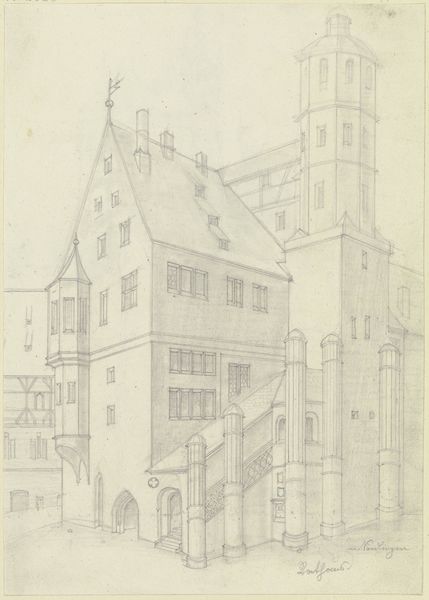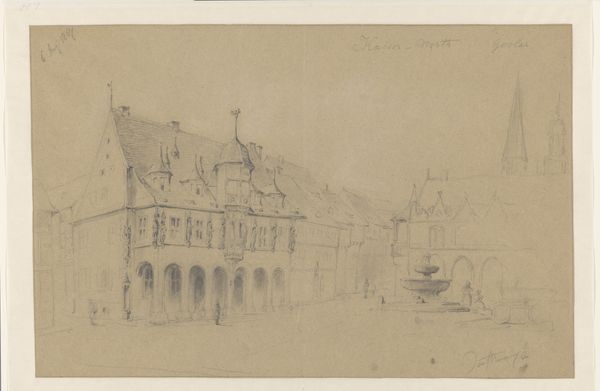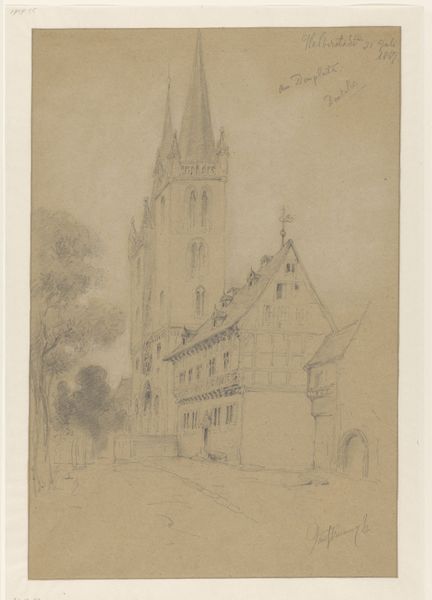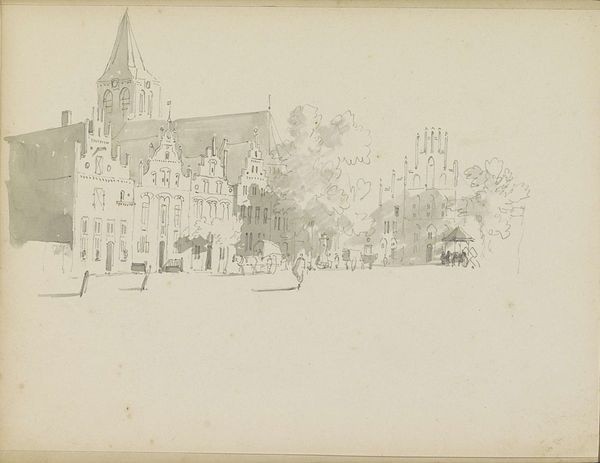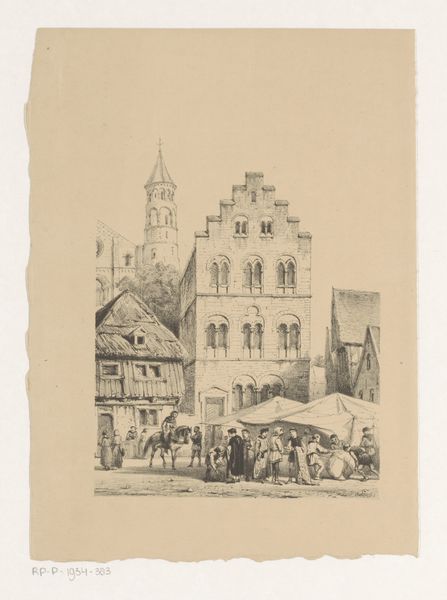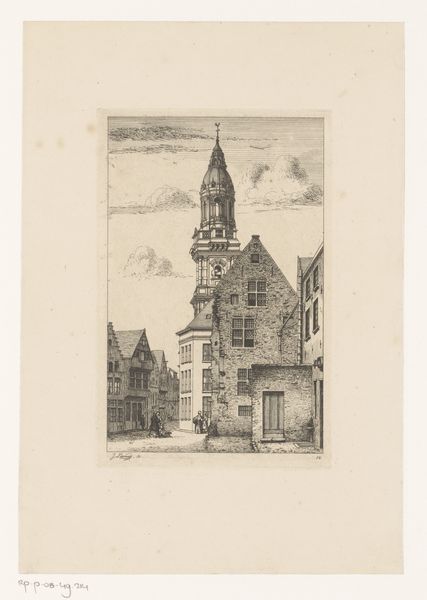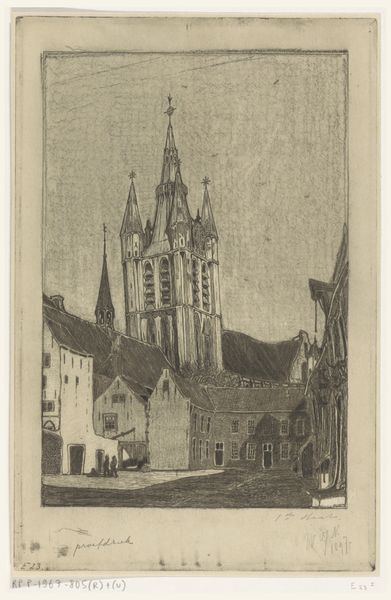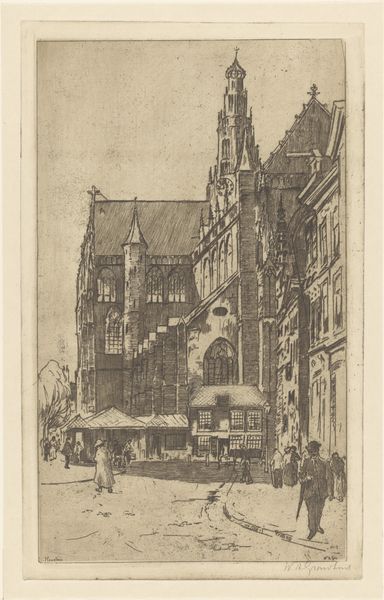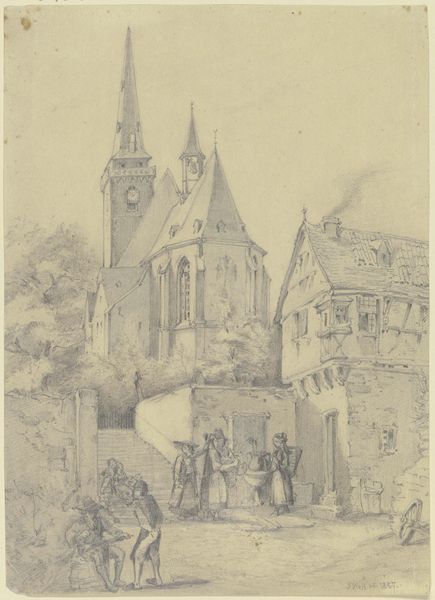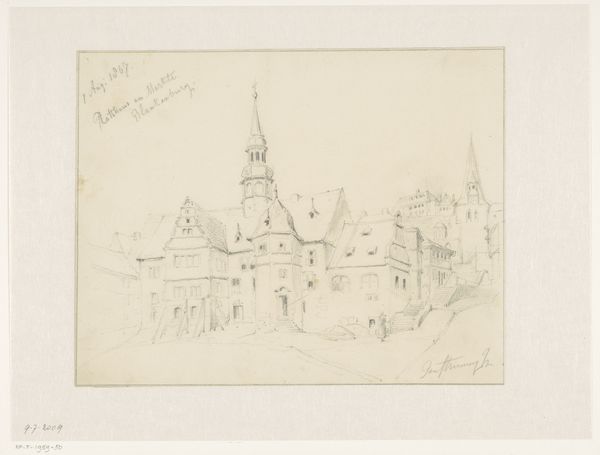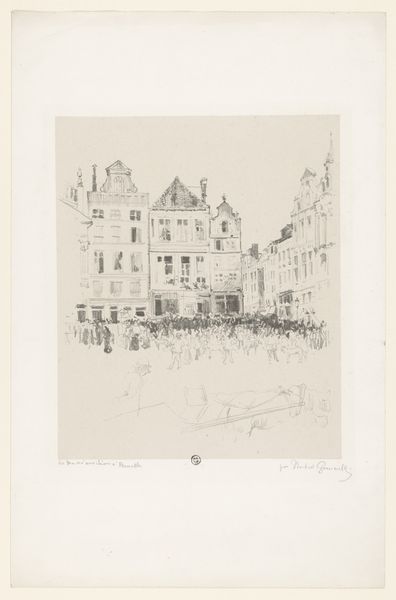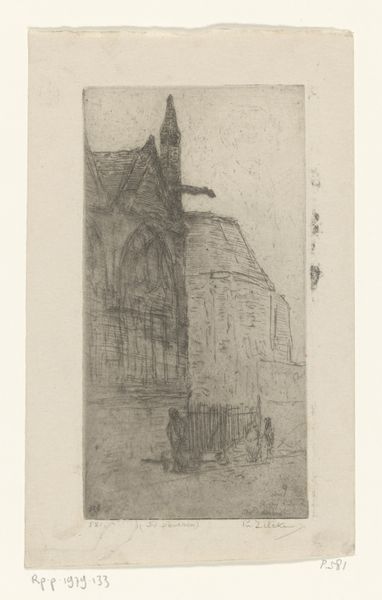
drawing, pencil
#
drawing
#
aged paper
#
light pencil work
#
sketch book
#
landscape
#
personal sketchbook
#
idea generation sketch
#
ink drawing experimentation
#
pen-ink sketch
#
pencil
#
sketchbook drawing
#
cityscape
#
storyboard and sketchbook work
#
sketchbook art
Dimensions: height 528 mm, width 348 mm
Copyright: Rijks Museum: Open Domain
Curator: Before us is "Het Raadhuis, met de Roelant, van Halberstadt," possibly created in 1867 by Jan Striening. It’s rendered in pencil, capturing a cityscape scene. Editor: My immediate impression is one of quiet solemnity. The tonal range is subtle, the lines delicate, and the composition centered. There's a compelling balance between the architectural details and the open space surrounding them. Curator: Striening’s choice to depict the Halberstadt town hall is interesting given the period. Following the Napoleonic era, many German cities were grappling with their identities, looking back to their medieval roots to forge a new sense of collective cultural pride. The Roland statue visible in the drawing represents civic liberties, freedoms hard-won in an era of rising nationalism. Editor: I’m drawn to the textures achieved through hatching and cross-hatching. Notice how the artist uses these techniques to create variations in tone, especially on the building facades, giving depth to an otherwise fairly linear drawing. The aged paper contributes to this sense of layering and intricacy. Curator: And consider the implied narrative here. While seemingly a simple cityscape, there's a distinct power dynamic suggested. The town hall, symbolizing authority, overlooks a public square that is occupied by a diverse range of subjects— a man, and an equestrian. This scene begs questions: Who held power, who moved materials in support of that power and how were common people navigating that power? Editor: The almost ghostly quality of the pencil work, especially in the sky, lends the structure an ethereal air, contrasting nicely with the earthiness of the building’s stone details. Curator: I think Striening captures a tension inherent in post-Napoleonic urban environments. There were aspirations of a democratic ideal juxtaposed against the realities of deeply entrenched social hierarchies. How were those histories negotiated through a city’s very architecture and infrastructure? Editor: Ultimately, Striening presents us with a complex interplay of form and texture. It encourages careful observation, an appreciation for craft, and rewards the contemplative viewer. Curator: Indeed. By highlighting this seat of power, Striening invites us to reflect on the ways history continues to influence not only urban spaces, but our modern lives.
Comments
No comments
Be the first to comment and join the conversation on the ultimate creative platform.
